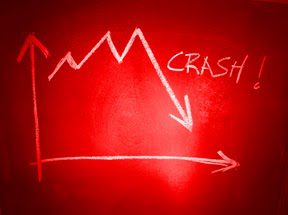One of the few business certainties today is continued uncertainty. Stock markets are up one day, down dramatically the next. An interconnected global economy means debt crises in Europe drag down share prices in America and Asia. And business has lost faith in gridlocked politicians to act quickly and decisively.
It’s enough to make business executives long for the good old days, when markets were stable, profits grew slowly and steadily, global competition was manageable and politicians were predictable. The only problem? Stability and certainty is a myth.
“We create a fiction for ourselves that there are times when things aren’t changing,” said Daniel Rasmus, business consultant and author of Management by Design. “We’ve always had uncertainty. It’s a matter of if that’s affecting you or not at that moment.”
The difference now is the uncertainty du jour happens to be a global financial issue that has affected a wide range of people, Rasmus said. While volatility and economic uncertainty persist, there are steps CLOs can take to help leaders adapt and profit from increased volatility. They include helping leaders define uncertainties that affect their businesses, practicing scenario planning and developing feedback loops and mechanisms.
Training leaders to cope starts with putting a name to uncertainty so unexpected conditions don’t blindside them. Generally speaking, people are not very good at putting issues on the table, Rasmus said.
“Once you name something that is uncertain, you start exploring different ways under different circumstances that it would play out.”
CLOs can also help create culture where it is acceptable, and expected, for people to share concerns and express uncertainty. Too often, office politics is the biggest barrier to naming uncertainty. Many bosses think it’s better to look smart than admit ignorance, Rasmus said.
“It’s not OK to say ‘I don’t know the answer to that but let me tell you how I’m thinking about it,’” he said.
Scenario planning can then help leaders to develop a thinking process that allows them to explore the range of possibilities and exercise their ability to adjust to divergent outcomes. Agility can’t be just something you say you’re going to do. The practice of planning is useful even if those scenarios don’t end up being used.
“If you don’t practice it you don’t do it. Scenarios force you to do that,” Rasmus said. “They force you to go into these very divergent futures.”
Rasmus called it “wind-tunneling,” putting ideas through a virtual wind tunnel to test scenarios and watch how they respond to varying conditions. That sort of experimentation and analysis is critical to dealing with an uncertain future.
“There’s no data about the future,” he said. “Just having more data and doing more research isn’t going to give you a better answer about something where there’s no understanding of what the future will be.”
While a spirit of experimentation is key, so is the ability to do something with the results of those tests. Rasmus recommended setting up a rapid feedback loop that enables leaders to discuss results and quickly make adjustments.
In addition to helping leaders develop the skills and abilities to deal with uncertainty, CLOs can also serve as an example for the rest of the organization for the behavior and mindset needed to handle rapid change and uncertainty. Processes and practices are fluid, Rasmus said, and learning and development professionals should conduct experiments with their own work and be willing to try new approaches if it’s not working.
“You can’t get married to everything,” he said. “The processes and the practices that we put in place are not going to be something that we’re going to see 10 years from now. It’s going to be different.”
Executive shuffles can add to the uncertainty. In Silicon Valley, Yahoo’s board ousted outspoken CEO Carol Bartz and HP fired its third CEO in six years, naming former eBay executive and California gubernatorial candidate Meg Whitman to replace Leo Apotheker. Partner those changes with economic uncertainty and the result can be leaders feeling like they’re operating in strategic limbo.
“The most important skill these days is learning how to learn,” Rasmus said. “It’s not what you learn, but being open and having the capability to integrate new learning and new data and modifying your points of view and your worldview based on what’s coming at you.”
Mike Prokopeak is editorial director of Chief Learning Officer magazine. He can be reached at mikep@CLOMedia.com.















